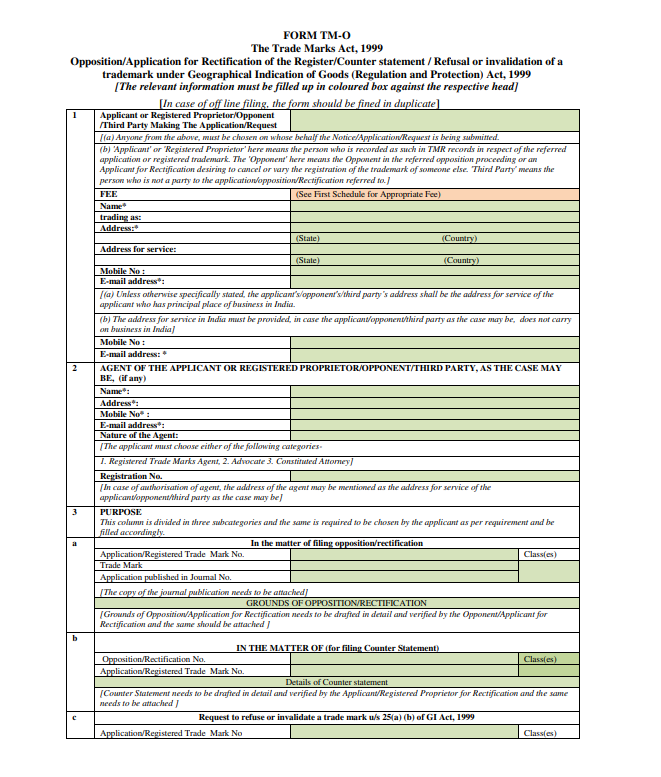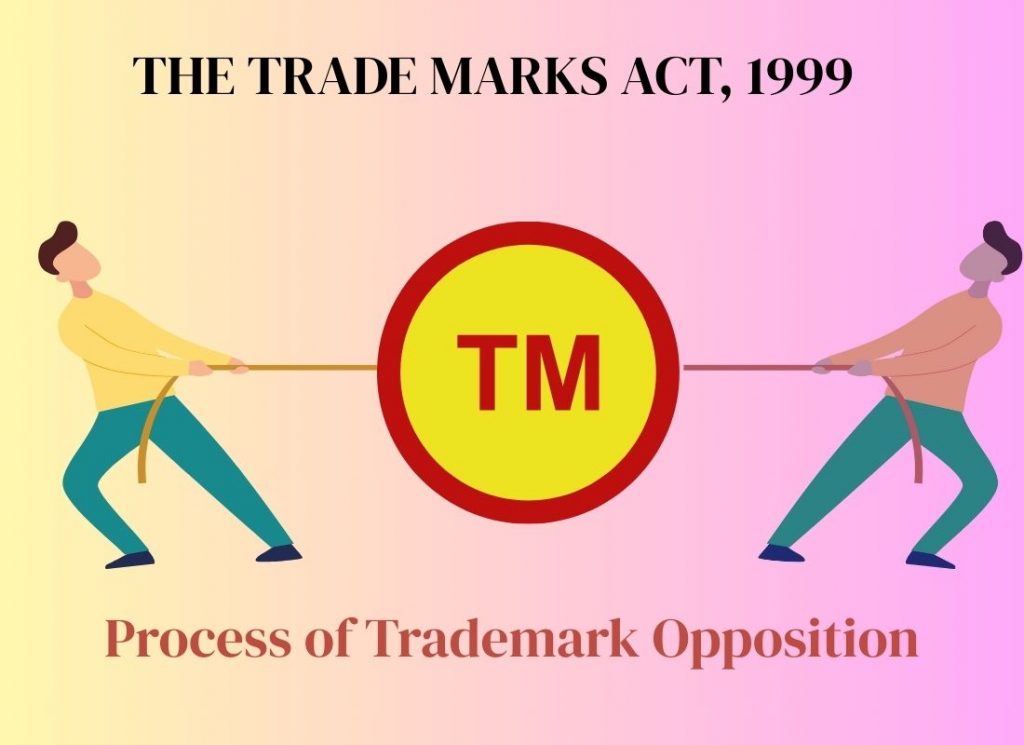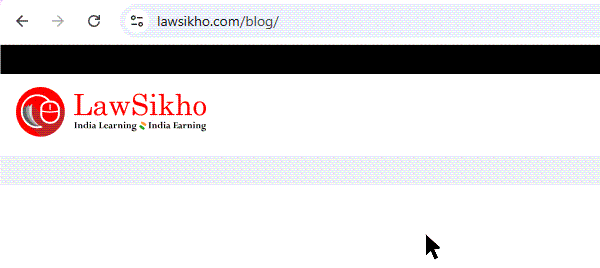This guide teaches you the concept of Trademark Opposition and will also walk you through the process of it. The article covers the grounds for opposition, procedural steps, and strategic considerations to help you, legal professionals, effectively protect and challenge conflicting trademarks.
Table of Contents
Remember Candlemonium? If you do, then awesome! If you don’t, I will be giving you a recap.
So, yes, my friend Tara’s business was in full swing. It has been two years since she started her small business called the ‘Candlemonium’. Her small store outside her neighborhood had been a huge hit, and we had officially gotten her name and logo trademarked!
She was doing her normal morning routine, which was sipping coffee and scrolling through a trademark journal, but she spotted something odd today, a new trademark application for a candle. But just not any candle, but one that looked exactly like Candlemonium. The same packaging, the same color scheme, even the same distinctive name, ‘Candlemania, well, alm ost the same.
Her mind was spiralling. In a frenzy, she called me, and I calmed her down and told her about the process of Trademark Opposition.
Now, if you are here because of something similar happening to you or your client, then this article is for you. I get it, you have brainstormed the perfect name, invested in marketing, and finally filed your trademark application, and everything seems smooth until someone tries to sneak in with a similar mark, riding on your hard-earned reputation. Frustrating, right?
That’s exactly why trademark opposition exists. It is your chance to stop a trademark before it gets registered and starts causing confusion in the market. Think of it as a defensive shield. In this guide, I’ll walk you through everything you need to know about trademark opposition in India, how to file one, how to defend against one, and why you should always keep an eye on the Trademark Journal. Because trust me, when it comes to protecting your brand, staying one step ahead makes all the difference.
Why trademark opposition matters
Let us first cover the basics: what is Trademark?
Trademarks are covered under the Trademark Act of 1999, according to section 2(1)(zb):
“Trade mark means a mark capable of being represented graphically and which is capable of distinguishing the goods or services of one person from those of others and may include shape of goods, their packaging and combination of colours”
And according to WIPO,
“A trademark is a sign capable of distinguishing the goods or services of one enterprise from those of other enterprises. Trademarks are protected by intellectual property rights.”.
Now, trademark opposition is a preventive measure. Instead of letting a trademark get registered and then fighting a costly battle to cancel it, opposition allows you to block a conflicting mark at the registration stage itself.
Think of it as quality control for the trademark registry. If businesses do not actively oppose problematic marks, the marketplace gets cluttered with confusingly similar names, leading to brand dilution and consumer confusion, and that is what we are trying to avoid.
When Tara saw a mark similar to hers in the trademark journal, she had two choices:
i) Ignore it and hope customers don’t get it, or,
ii) Take action and stop it before it becomes a registered trademark.
If she went with the first option, then it would be taking a risk and looking at potential losses. She has accumulated a few regular customers over the past two years who buy from ‘Candlemonium’ because they trust that brand.
If ‘Candlemania’ makes it out with a similar logo, the customer might pick that one up, not realising that they are picking the wrong one. This is precisely the reason why we want to avoid this choice.
The smart move would be to take action and a preventative step so that you can nip it in the bud.


Now, if you are from Karnataka, you know that ‘Nandini’ is a famous dairy brand. You know one of the above is the actual brand, and one is not. Let’s say someone is new to Mysore and, based on a friend’s suggestion, they want to try out Nandini’s rose milk. In the store, which one would they pick?
The left is the actual brand, and the right is the ripoff, so if they pick up the one on the right, then a loss has occurred to the actual brand, and moreover, it led to confusion among the customers.
This was an actual case. In the case of Nandhini Deluxe v. Karnataka Co-Operative Milk Producers Federation Ltd, Karnataka Co-operative Milk Producers had been using the name ‘Nandini’ for its dairy products as early as 1985. Meanwhile, a well-known restaurant chain in Karnataka, ‘Nandhini Deluxe,’ began operating in 1989. Things got complicated when Nandhini Deluxe got its trademark registered, and the logo was quite similar as well.
Karnataka Co-operative Milk Producers took the matter to the Intellectual Property Appellate Board (IPAB) and later to the Karnataka High Court, both of which ruled against the restaurant chain. Their reasoning? The names ‘Nandini’ and ‘Nandhini’ were too alike, differing by just one letter, and this could confuse consumers. But, the Supreme Court stated that while the two names sound similar, their logos, branding, and usage were different.
The restaurant also used the phrase “Deluxe” and the tagline “The Real Spice of Life,” making it distinct from the dairy brand. Moreover, the Court emphasised that a company cannot monopolise an entire class of goods, particularly if it does not use its trademark for all the items listed under that category.
In the end, the Supreme Court allowed Nandhini Deluxe to keep its trademark on one condition. The restaurant had to exclude milk and milk products from its application to avoid any direct competition with Karnataka Co-operative Milk Producers.
Trademark opposition under Indian Law: A quick overview
You and I both know that a strong legal foundation is very important; this is what makes or breaks a case. Trademark opposition is not just about spotting a problem, it is about knowing the law and using it at the right time.
Key provisions under the Trade Marks Act, 1999
The Trade Marks Act, 1999, lays out the opposition process. Here are the key sections you need to know:
- Section 21 – Gives any person the right to oppose a trademark within 4 months of its publication in the Trademark Journal.
- Sections 9 & 11 – Outline the absolute and relative grounds for opposition (we will get into that in a minute).
- Section 25 – Talks about the validity and renewal of trademarks (important if you’re opposing a renewed mark).
The law gives you two major categories under which you can oppose a trademark:
Absolute grounds under section 9
- These apply if the trademark itself is fundamentally flawed, such as its descriptive, e.g., “best speakers for a speaker shop”.
- It’s generic, eg, “Smartphone” for phones.
- It lacks distinctiveness, which means that common words are used with no unique identity.
- It’s offensive or against public policy.
Relative grounds under section 11
These apply when a conflict with an existing trademark arises, such as:
It is identical or confusingly similar to another registered trademark, or it is likely to deceive consumers into thinking it is related to an existing brand or it is filed in bad faith, purely to block another brand from using the name.
Remember, Tara’s case would fall under relative grounds because ‘Candlemania’ was too similar to her brand and likely to mislead consumers.
The Trade Marks Rules, 2017: The playbook for opposition
While the Act gives the broad legal framework, the Trade Marks Rules, 2017 provide the step-by-step process. Some key points:
- Rule 42 – How to file a notice of opposition.
- Rule 44 – The format for a counter-statement (if you are on the receiving end of an opposition).
- Rules 45-47 – The evidence stage (this is where you bring in the heavy legal artillery).
The Trade Marks Act, 1999 also provides a structured process for opposition. Here’s how it works:
- A trademark is published in the Trademark Journal after examination.
- Anyone can oppose the mark within 4 months of publication.
- The applicant gets a chance to respond (this is called a counterstatement).
- Both parties submit evidence to support their claims.
- A hearing takes place, and the Registrar makes a decision.
- If the opposition is successful, the trademark is refused registration. If not, it moves forward to registration.
Simple? Yes. But also, crucial. If Tara had ignored the journal, Candlemania would have become a registered trademark, making it much harder for her to challenge it later.
Who can oppose a Trademark?
Alright, so you spot a suspicious trademark, can you oppose it? The good news is that you do not need to own a registered trademark to file an opposition. If you have a legitimate interest, you can challenge the mark.
People who can oppose a Trademark
- You, the prior user – If you have been using a brand name or logo before the applicant, you have a solid case.
- You, the registered owner – If you already own a registered trademark that is similar to the new application, you can oppose it.
- Businesses with similar marks – If the new mark is confusingly similar to an existing brand, even if it is not yours, you can step in.
- Industry watchdogs and consumers – Even the general public can oppose deceptive trademarks (though this is rare).
Opposition vs. Rectification: What is the difference?
Now, you might be wondering—what if a bad trademark already got registered? Can you still challenge it?
Yes, but that is where rectification comes in. Here’s the key difference:
- Trademark Opposition – Stops a trademark before it gets registered.
- Trademark Rectification – Challenges a registered trademark, asking for its removal or modification.
Opposition is proactive, it prevents confusion before it starts. Rectification, on the other hand, is a corrective action taken when a mark is already in the system.
If Tara had missed the opposition window, she would have to go through the rectification process later, which is a longer, more complex fight. Moral of the story? Monitor, oppose, and protect your brand before it’s too late.
Step-by-step process for trademark opposition
Step 1: Checking the Trademark journal
The very first step is, before filing an opposition make sure that the mark you want to oppose has been published in the Trademark Journal. Opposition can only be filed within four months from the publication date. If you miss this deadline, the mark will proceed to registration, and you’ll have to go through the much more complex rectification process.
Here you can search for similar trademarks. You can check class-wise as well.
Step 2: File a notice of opposition (Form TM-O)
To start the opposition process, you need to file Form TM-O with the Trade Marks Registry. This document sets out your reasons for opposing the mark and must be filed within the allowed timeframe.

This is how it would look, and you can see that it says ‘Opposition/Application for Rectification of the Register/Counter statement / Refusal or invalidation of a trademark under Geographical Indication of Goods (Regulation and Protection) Act, 1999’. For Tara and her brand Candlemonium, it would fall under Opposition.
What should your opposition cover?
Your notice of opposition should clearly state:
- Details of the opponent – If you are opposing, then here your name, address, and legal status and whether you are an individual, business, or registered trademark owner should be covered.
- Details of the opposed trademark – The mark you are opposing, including its application number, class, and owner details.
Here in this case, the applicant’s class will be the same as Canldemonium’s, which is classes 3 & 4.
- Grounds for opposition – Why you believe the mark should not be registered.
- Existing rights (if any) – If you own a similar registered trademark or have been using it before the applicant.
- Evidence (if available) – Any supporting documents, such as prior use of the mark, promotional materials, or customer recognition.
With this in mind, we get to the drafting bit.
Step 3: Drafting the Opposition
A well-drafted Notice of Opposition increases your chances of success. I will tell you how to go about this effectively.
- Details of the parties
In this section, you need to include the name, address, and the name of the trademarked products. If the opponent is a company or business, mention its legal status (such as a private limited company, partnership, etc.). While mentioning the details of the opponent that is you, include details about the new trade mark in the journal and put in the exact details of where it can be found.
Attorney Code: ___
FORM TM-O
THE TRADE MARKS ACT, 1999
Notice of Opposition to Application for Registration of a Mark
[Sections ___ and Rule __]
BEFORE THE REGISTRAR OF TRADE MARKS,
TRADE MARKS REGISTRY,
MUMBAI
IN THE MATTER OF Application No. ___ in Classes 3 & 4 in respect of the mark in the name of Candlemania of the address IM Towers, Juhu Circle, Mumbai, Maharashtra – 400049.
And
We, CANDLEMONIUM, a small business incorporated and registered under the Companies Act 1956, having its Registered Office at 12th Lane, Mumbai, Maharashtra – 400001 (hereinafter referred to as the “Opponent”, which will refer to Tara Shivakumar and her small business Candlemonium, do hereby give notice of our intention to oppose the registration of the mark advertised under Application No. ____ in Classes 3 & 4 in the Trade Mark Journal No. ___ dated March 15th, 2025, at Page No. 9990. It was made available to the public on March 25th, 2025.
- Reason for opposition
Before getting to the grounds, briefly mention why you are filing this opposition.
The present opposition is filed by the Opponent against the Applicant, Candlemania, who has applied for the registration of the mark .
Please refer to the table below:
| Opponent’s mark | Applicant’s mark |
The Learned Registrar may note that the Applicant’s impugned mark is identical in appearance, colour scheme and structure.
- Grounds for opposition
Here you need to include the grounds for opposition. Why are you opposing? Will this new mark be an issue for your business? Will it affect your livelihood? Will it break the trust of your customers? Include all this and anything else you might see fit as per your brand and product.
(first briefly cover the facts)
The opponent, Candlemonium, came into business in January 2023 and has been consistently gaining traction and has sold over two lakhs candles and has a strong customer base.
(then come to the grounds)
- Deceptive similarity: The Applicant’s mark “Candlemania” is visually, phonetically, and conceptually similar to the Opponent’s well-established mark “Candlemonium.” The use of the same prefix “Candle” and a highly similar suffix creates a likelihood of confusion.
- Prior use and reputation: The Opponent has been using the trademark “Candlemonium” and
continuously since 2023 and has built substantial goodwill in the market. The Applicant’s mark attempts to take unfair advantage of this reputation.
- Risk of consumer confusion: The identical packaging, color scheme, and trade dress are likely to mislead consumers into believing that the Applicant’s products originate from the Opponent’s business.
- The Opponent has taken an active role in promoting the name and brand by sponsoring small events in the city. The trademark is a fanciful word having no denotative meaning, and is, accordingly, an inherently distinctive mark.
- The Opponent is, thus, the proprietor of the trademarks Candlemonium and
by virtue of priority in adoption, continuous use and extensive promotion. Due to the knowledge of and recognition by the relevant sections of the consuming public on account of the extensive sale of products under the
marks, the said trademark has come to be exclusively identified and associated with the Opponent and no one else.
- Violation of the Trade Marks Act, 1999: Moreover, the registration of the Applicant’s mark is barred under section 11(1) as it is confusingly similar to an earlier mark and is likely to deceive the public. This will also cause major losses and affect the livelihood of Ms. Tara Shivkumar, as this is her only venture.
- Prayer and verification
Here, you need to specify what the Opponent is requesting from the Trademark Registry, typically the refusal of the Applicant’s trademark.
In view of the grounds set forth above, the Opponent prays that the present Opposition be allowed and consequently that Application No. ___ in class 3 & $ for the mark will be refused registration. The Opponent also prays that it be awarded the costs of these proceedings.
VERIFICATION
I, ___ , Advocate verify that I am acquainted with the facts of the present case and state that the averments made in paragraph __ are derived from the records of the Opponent and believed to be true, the averments made in paragraph ____ is based on the published records of the Trade Marks Registry.
Hearing and final decision in trademark opposition
Once the exchange of pleadings and evidence is complete, the trademark opposition enters its most decisive phase, which is the hearing. This is the stage where both the opponent and the applicant get a final opportunity to argue their case before the Registrar of Trade Marks. A well-argued hearing can tilt the case in favor of either party, making it a crucial step in the opposition process.
How are hearings conducted?
The Registrar of Trade Marks notifies both parties of the hearing date well in advance, so that you will have sufficient time to prepare. Depending on the circumstances, the hearing may be conducted physically at the Trademark Registry or virtually through video conferencing.
During the hearing, you, the opponent, and the applicant present oral arguments, relying on the evidence submitted earlier. This is not a stage for introducing new evidence; everything argued must be backed by the documents and affidavits already on record.
Arguments presented by both sides
At the hearing, the opponent’s primary argument revolves around the similarity between the marks. You, as the opponent, will have to attempt to prove that the applicant’s mark is deceptively similar to yours and is likely to confuse consumers. You can also argue that the applicant is unfairly benefiting from their brand’s goodwill and reputation, which are the things you might have already added and submitted.
Registrar’s decision and possible outcomes
After hearing both sides, the Registrar will carefully evaluate the arguments and evidence before delivering a decision. There are three possible outcomes:
i. Trademark application is rejected: If the opposition succeeds, the Registrar will refuse the trademark application, preventing the applicant from securing registration.
ii. Trademark application is accepted: If the opposition fails, the Registrar will allow the trademark to proceed to registration, granting the applicant exclusive rights over the mark.
iii. Partial acceptance: In some instances, the Registrar may permit the trademark’s registration but with certain modifications, such as limiting the scope of goods or services or requiring disclaimers.
Once the decision is issued, both parties are notified. However, if either party is dissatisfied, they have legal remedies to challenge the decision.
Appeal and further remedies
If you are not happy with the decision, then you can file an appeal. Previously, such appeals were filed before the Intellectual Property Appellate Board (IPAB). However, with the abolition of IPAB in 2021, appeals must now be filed before the High Court with jurisdiction over the matter.
In addition to an appeal, if trademark rights are being violated despite opposition, the aggrieved party can also approach the civil courts. A trademark owner can file a suit for infringement or passing off in the appropriate District or High Court. Legal remedies available in such cases include:
- Injunctions: A court order preventing the infringing party from using the mark.
- Damages: Financial compensation for losses suffered due to the infringement.
- Seizure of infringing goods: Confiscation of counterfeit or infringing products from the market.
The opposition process is designed to ensure that only rightful trademark owners secure registration. For businesses, an effective opposition can prevent consumer confusion and protect brand identity, while for applicants, successfully defending an opposition ensures legal protection for their trademark. Thus, a well-prepared case, strong evidence, and persuasive arguments during the hearing play a critical role in determining the final outcome.
Conclusion
This is essentially how a trademark opposition takes place. It is always better to keep track of infringements and act quickly if you see something suspicious, because if you end up lacking here, then your losses will be higher by the minute. Don’t be intimidated by the process as well, follow the instructions clearly, and you’re good to go!






 Allow notifications
Allow notifications
